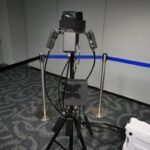
DHS S&T to Host Third Biometric Technology Rally The Department of Homeland Security Science and Technology Directorate this fall will host its third Biometric Technology Rally and is seeking submissions to participate. The 2020 rally will focus on the challenges of reliably identifying small, free-flowing groups of individuals in a crowded environment such as airports or ports of entry. The rallies the past two years focused on high throughput biometric technology capabilities in checkpoint environments. S&T is seeking face and…

 By
By 











